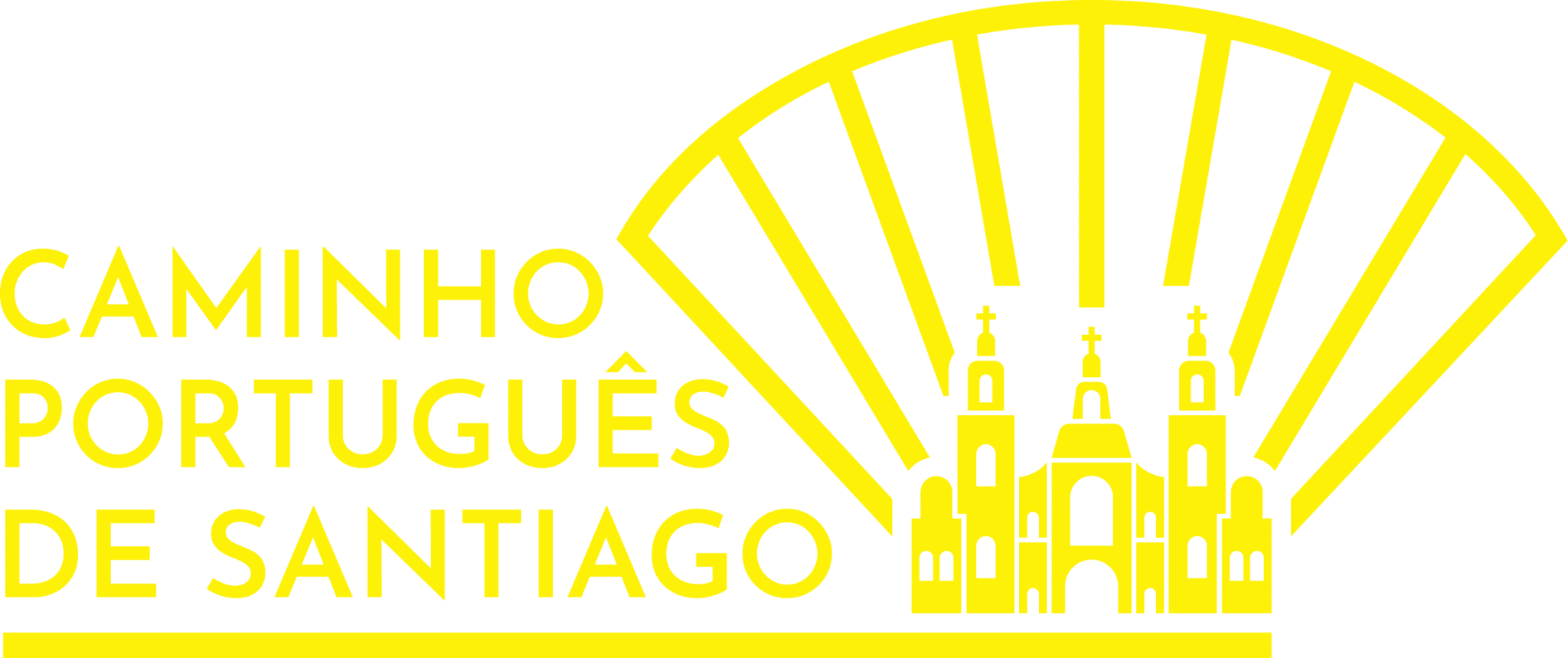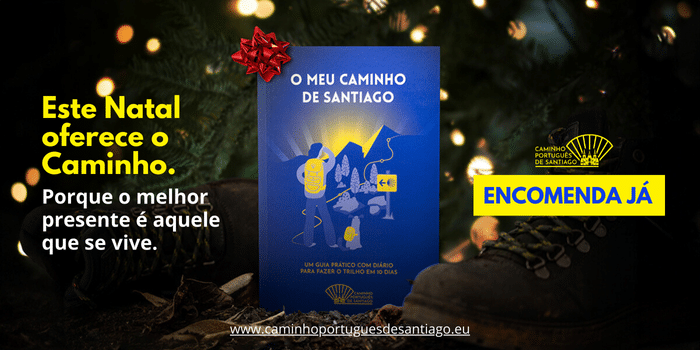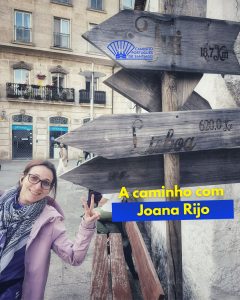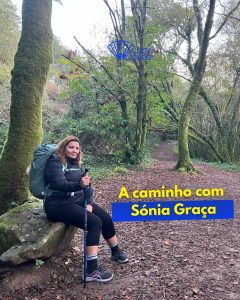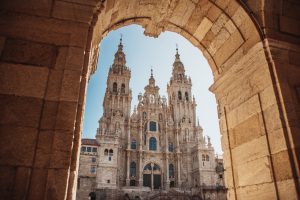Many people who want to make the millennial trek don't do it because they think it will take weeks or even months. However, they couldn't be more wrong. In fact, if you're fit enough, you can even do it in 4 short days, or even 3, if you cycle. However, today we're going to talk about those who have a week to walk. Yes, it is possible to reach Santiago de Compostela in just 5 days and receive the final document. Find out how in this article!
Fazer o Caminho Português de Santiago em 5 dias parece impossível, mas não é. Para receberes a Compostela, o documento oficial de quem peregrina até à cidade do Apóstolo, “apenas” precisas palmilhar 100 quilómetros. Ou seja, é essa a distância mínima, para dizer que alguém concluiu, oficialmente, o nosso percurso favorito.
To do it in the same few days as a working week, you'll have to take the central crossing. Despite its name, it doesn't have to start in the middle of Portugal. Many pilgrims even start in Galicia, more precisely in Tui.
What you need to take to do the Portuguese Camino de Santiago in 5 days.
On the trail, the less the better. We therefore recommend that, in addition to your backpackAlso light:
To do the Portuguese Camino de Santiago in 5 days, or any nature trail, all you need to bring is a change of clothes. Even if you go for more days, this advice holds true. This is because, in the albergues, you can wash your own clothes. trail clothing by hand or even by machine.
- Your documents.
This is possibly the most important point. Without documents, you can't enter the rest areas, there's no access to the pilgrim menu and, if you have an injury and you're in a foreign country, you'll pay a lot of money to see a doctor. So don't forget:
1) ATM card.
2) Pilgrim's pass.
3) Citizen's card.
4) European Health Insurance Card.
If you've traveled within the European Union, you should already have it. But if not, it's easy to apply for. Just go to https://www.seg-social.pt/inicio and ask for yours.
For foot blisters, there's nothing better than Compeed. However, don't forget bandages, Betadine and even the sunscreen.
- Basic hygiene products.
Toothbrush and toothpaste, 3-in-1 shower gel to save space and sunscreen. Try to put everything in a small case to save on space.
To find out more about what to bring backpack, we have a full article here!
What city do I have to start in?
To do the Portuguese Camino de Santiago, you should start in Tui.
There are several ways to get to this original city. In addition to convenient hitchhiking, public transport offers a good alternative to the car. If you're coming from abroad, the closest airports to Tui are Vigo, Porto and Santiago de Compostela.
- From Vigo is the most convenient journey. The train connects directly to the town that borders Valença, but it only runs twice a day. In the morning and in the afternoon, it takes 45 minutes to cover 25 km.
For those who aren't particularly interested in trains, there are always buses. These run daily, more frequently than the first option, and are just as cheap, if not cheaper. It's a question of preference and timetables.
- From Porto, there are only public transport cars so far. They're a bit more expensive than going via Vigo. However, the distance is greater.
- Santiago de Compostela, despite being the Galician capital, may be the most uncomfortable of the three. The trains stop in Pontevedra, forcing you to take the bus to your destination.
Steps for the journey ahead.
Here you can see how to do the Portuguese Camino de Santiago in 5 days. We've divided the days into stages to make it easier for you to absorb all the information.
Stage 1: Tui - Mos
In Tui, you're greeted by Galician vegetation. The woods along the way in Spain are full of people - pilgrims and others - making the journey a friendly meeting of languages and faces and "buen camino" for the day. Sometimes you'll find musicians playing and businesses setting up shop where the greenery combines with the main roads. This route is simple, as there are no major climbs to speak of. Just the natural beauty of this region.
That is until you reach Porriño, a town that is divided between pilgrims and its dynamic industry. With a road lined with trucks, there are monuments and pieces of art scattered throughout the town and, if you want to end the day here, you have accommodation options.
When you leave, you find the tarmac again. Cars, trucks and long roads with narrow sidewalks. You can't be too careful until you reach the climb to Mos.
From here, you completely leave the hustle and bustle of the city behind, with the drowsiness of the heat and the shelter of the low population density. Always uphill, Mos is a lost village with a nice church that doesn't shy away from ringing its bells. The perfect place to rest until the next day.
Stage 2: Mos - Pontevedra
The Mos - Pontevedra stage is one of the most difficult of the entire Camino de Santiago, but it is still one of the most beautiful.
Right at the start, there's a half-kilometer climb that takes you to a less winding road with local businesses always on hand to welcome pilgrims who are hungry or thirsty.
However, those who go up have to come down and the road to Redondela is extremely steep, making it difficult for hikers to cross. It's important to be careful: you could easily fall and hurt yourself.
Here, the route becomes urban again, but the small town has a certain charm. It's the perfect place for lunch or a snack, as the town has good facilities for pilgrims, since the coastal path joins up with the central path.
From here, you'll be treated to a simpler route. Slow down and follow the forest trails and small villages along this route to Pontevedra. A city that never sleeps.
Stage 3: Pontevedra - Caldas de Reis
The Pontevedra - Caldas de Reis stage is a pleasant journey, with no major difficulties. After leaving via the Burgo Bridge, the crossing becomes simple, with no noteworthy elevations and an excellent selection of churches and other religious monuments.
The vines surround the houses and accompany you along the route which, due to its humility, gives you the time and desire to enjoy every step. Before meeting up with the N-550, you come to an area of waterfalls. It's a short detour that's worth the time.
Then you're soon in Caldas de Reis. You're greeted by a gentle village and a town center where you feel like resting and pondering the road you've traveled so far.
Etapa 4: Caldas de Reis - Padrón
The Caldas de Reis - Padrón stage is, for many, one of the most beautiful of the entire Camino de Santiago de Camino de Santiago. In these last moments of the pilgrimage, it's normal to see more and more people on the routes, more accommodation and, above all, more shops on the roads that take us to the Galician capital.
With a small climb along the way, this journey doesn't present any major difficulties. Even local people walk these routes, as exercise for the whole family.
The next thing you know, you're in the middle of the Spanish forest, with ancient Roman roads to get you into the spirit of the first pilgrims. As a culmination, Padrón looks like a replica of a city from the ancient empire of Caesar Augustus, with its brown tones and architecture unlike the rest of the region. It's time to sit down and order the peppers that take their name from the town.
Stage 5: Padrón - Santiago de Compostela
The Padrón - Santiago de Compostela stage is a return to urban trails designed with cars in mind. After the Roman city, you start to make your way through the last forest you'll come across. The rest of the route is back on the road that has accompanied you over time: the N-550.
The journey takes place in a space of social transformation, between villages and modern cities such as O Milladoiro.
Arriving in the longed-for capital is a whirlwind of emotions and feelings, always in the company of pilgrims, visitors and inhabitants of the Galician capital. As you follow a straight line, you are greeted by the Chapel, Obradoiro Square and the end of the adventure.
It's time to reap the rewards of the journey, rest up and start planning the next one.
How many days can you walk the ancient trail?
Now you know how to do the Portuguese Camino de Santiago in 5 days. Take advantage of it, organize your week and follow the ancient route that awaits you. You already have the adventurous spirit, all you need is the experience!
Junta-te aos 60 mil peregrinos do nosso grupo, para teres uma ajuda à medida com pessoas interessadas e apaixonadas por este trilho, aqui: https://www.facebook.com/groups/796460957477202
